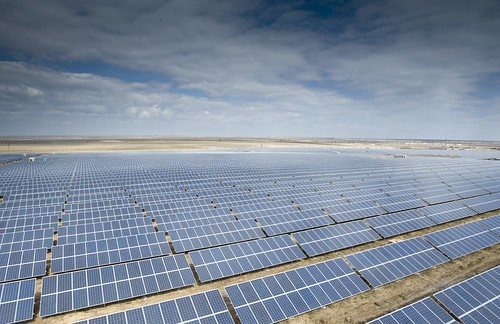The Good & Bad For Solar Power In Serbia
The Serbian town of Kladovo, located 250 kilometers east of the capital city of Belgrade, now holds one of the largest solar PV plants in the country, along with the largest hydroelectric power station in the country, making it a major supplier of renewable energy in the country.

Serbia’s Minister of Mining and Energy, Aleksander Antic, inaugurated the (not-so-large) 2 MW Solar PV plant last week. Spread over 12 acres of field, the PV plant is expected to power half of the Kladovo municipality during the summer.
The plant is owned by Kladovo-based Solaris Energy. Another 2 MW plant had come up in Kursumlija last year.
As per solar radiation data available from NREL (USA), Kladovo has a daily average insolation of 4.3 kWh/day. All in all, Serbia has a good solar potential.
Now for some bad news. Solar installations in Serbia are not expected to go beyond 10 MW by 2020. Shocking, if you consider that the country provides handsome solar tariffs (16.3-19.8 euro cents/kWh). The barrier for the growth of solar is the ridiculous quota allotted for solar PV — a mere 6 MW for ground-mounted plants and only 4 MW for rooftop plants by 2020!
On paper, wind power seems to have been served a better deal. Wind farms have been allocated a 700 MW quota by 2020. But there are no wind farms in the country as we speak. However, several projects are reported to be in the pipeline. As per Minister Antic, “billions of euros of investments in wind energy are planned for the next few years.”
Serbia’s target for the share of renewable energy in the overall energy mix is 37% by 2020, up from the current 29%. This is inclusive of large hydro power. This is higher than EU’s renewable energy target for 2030 (Serbia is a candidate for EU membership).
The main producer of electricity in Serbia is the state-owned Elektroprivreda Srbije, with an installed capacity of 8379 MW of coal, gas, and oil-based power plants, along with large-scale hydro. Policymakers also largely favor lignite and hydro — both of which are in great abundance in the country.
Photo Credit: Activ Solar / Foter / CC BY-SA
Have a tip for CleanTechnica? Want to advertise? Want to suggest a guest for our CleanTech Talk podcast? Contact us here.
Latest CleanTechnica.TV Video

CleanTechnica uses affiliate links. See our policy here.
